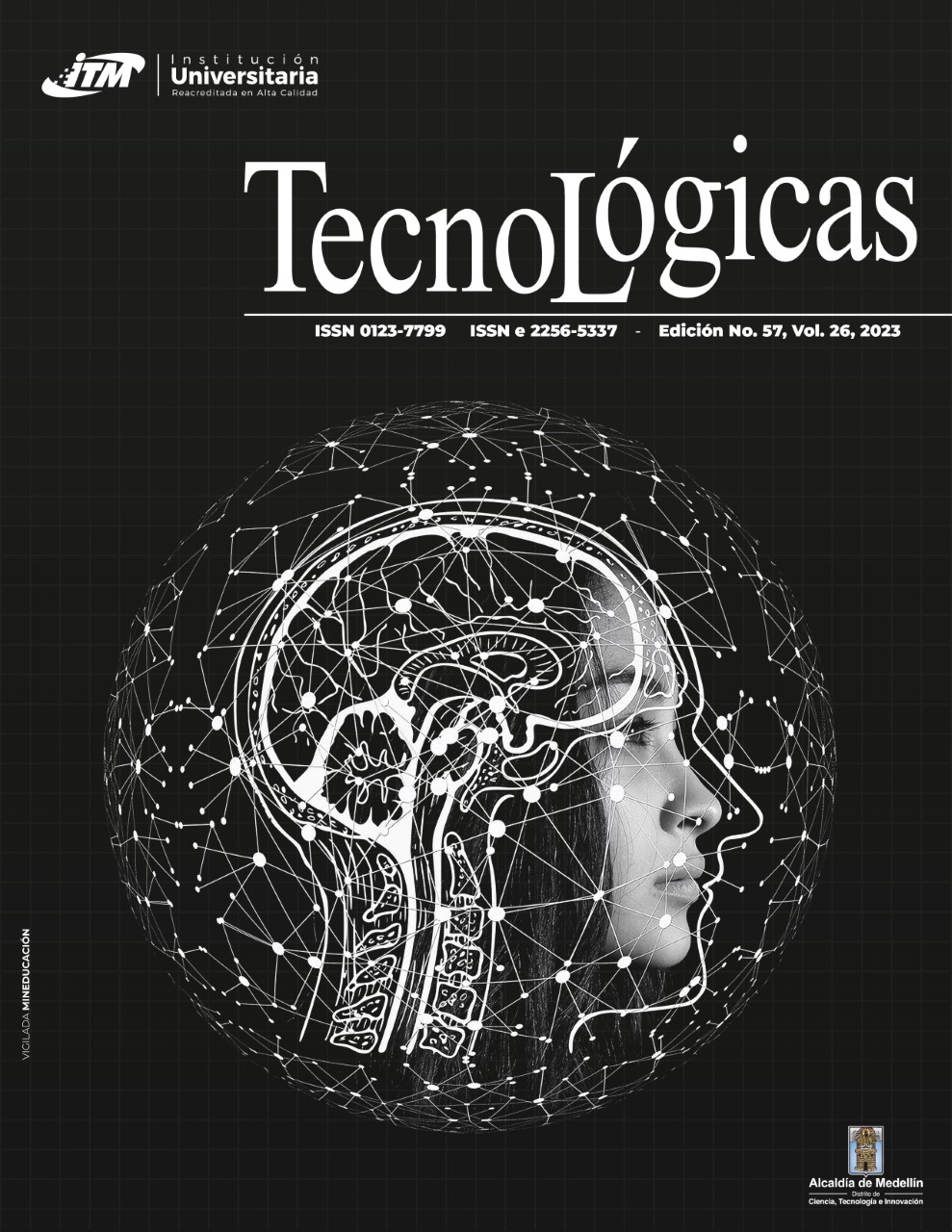Comportamiento biotribológico de prototipos de implantes de la aleación Ti6Al4V fabricados por EBM y posteriormente anodizados
Resumen
Las articulaciones de la cadera pueden resultar dañadas por causas metabólicas (enfermedad degenerativa) o mecánicas (fractura), limitando su funcionalidad. Para restablecer el movimiento de la articulación, esta debe ser sustituida por una prótesis de cadera. En las articulaciones se producen fenómenos de lubricación, fricción y desgaste que, a su vez, suelen ser responsables del fallo de la prótesis, provocando su aflojamiento. Por tal motivo, el objetivo del presente estudio consistió en evaluar el comportamiento biotribológico de un prototipo de prótesis de cadera de Ti6Al4V manufacturado mediante fabricación aditiva por haz de electrones (EBM) y posteriormente modificado superficialmente mediante anodizado. Una vez obtenido el prototipo, se pulieron algunas muestras para realizar ensayos biotribológicos y otras para anodizarlas. Las pruebas biotribológicas se realizaron en un tribómetro de esfera sobre disco utilizando contracuerpos de alúmina de 6 mm de diámetro, empleando una carga de 5 N y velocidades de 30, 50 y 70 rpm. Se obtuvieron huellas de desgaste de 2 mm de diámetro, utilizando como medio un fluido corporal simulado (SBF) a una temperatura de 37 °C. El proceso EBM incrementó la dureza de la aleación Ti6Al4V respecto al proceso de forja convencional. Las muestras fabricadas por EBM, y posteriormente anodizadas, revelaron los valores más altos de coeficientes de fricción, mientras que las muestras fabricadas por forja y EBM indicaron coeficientes de fricción similares para todas las velocidades estudiadas. Adicionalmente, las muestras fabricadas por EBM, y después anodizadas, señalaron la menor tasa de desgaste, seguidas por las muestras fabricadas por EBM, mientras que las muestras fabricadas por forja evidenciaron la mayor tasa de desgaste. Igualmente, se encontró abrasión como principal mecanismo de desgaste en todas las condiciones evaluadas en las pruebas biotribológicas. Con la velocidad de 30 rpm se obtuvieron las menores tasas de desgaste para la aleación de Ti6Al4V con los diferentes procesos de fabricación; con esta misma velocidad se obtuvieron las mayores tasas de desgaste de los contracuerpos de todos los pares biotribológicos.
Referencias bibliográficas
S. Durdu, M. Usta, and A. S. Berkem, “Bioactive coatings on Ti6Al4V alloy formed by plasma electrolytic oxidation,” Surf. Coatings Technol., vol. 301, pp. 85-93, Sep. 2016. https://doi.org/10.1016/j.surfcoat.2015.07.053
J. Damon et al., “Mechanical surface treatment of EBM Ti6Al4V components: Effects of the resulting surface layer state on fatigue mechanisms and service life,” Mater. Sci. & Eng. A, vol. 849, p. 143422, Aug. 2022. https://doi.org/10.1016/j.msea.2022.143422
L.-C. Zhang, L.-Y. Chen, and L. Wang, “Surface Modification of Titanium and Titanium Alloys: Technologies, Developments, and Future Interests,” Adv. Eng. Mater., vol. 22, no. 5, p. 1901258, Dec. 2019. https://doi.org/10.1002/adem.201901258
M. T. Mathew, V. A. Barão, J. C.-C. Yuan, W. G. Assunção, C. Sukotjo, M. A. Wimmer, “What is the role of lipopolysaccharide on the tribocorrosive behavior of titanium?,” J. Mech. Behav. Biomed. Mater., vol. 8, pp. 71-85, Apr. 2012. https://doi.org/10.1016/j.jmbbm.2011.11.004 71-85
M. T. Mathew, P. P Srinivasa, R. Pourzal, A. Fischer, and M. A. Wimmer, “Significance of tribocorrosion in biomedical applications: Overview and current status,” Adv. Tribol., vol. 2009, p. 250986, Jan. 2010. https://doi.org/10.1155/2009/250986
Y. Yan, A. Neville, D. Dowson, and S. Williams, “Tribocorrosion in implants-assessing high carbon and low carbon Co–Cr–Mo alloys by in situ electrochemical measurements,” Tribol. Int., vol. 39, no. 12, pp. 1509-1517, Dec. 2006. https://doi.org/10.1016/j.triboint.2006.01.016
J. M. Ríos, D. Quintero, J. G. Castaño, F. Echeverría, and M. A. Gómez, “Effect of EDTA addition on the biotribological properties of coatings obtained from PEO on the Ti6Al4V alloy in a phosphate-based solution,” Surf. and Interfaces, vol. 30, pp. 101857, Jun. 2022. https://doi.org/10.1016/j.surfin.2022.101857
M. A. McGee et al., “Implant retrieval studies of the wear and loosening of prosthetic joints: a review,” Wear, vol. 241, no. 2, pp. 158-165, Jul. 2000. https://doi.org/10.1016/S0043-1648(00)00370-7
Y. Yan, A. Neville, and D. Dowson, “Tribo-corrosion properties of cobalt-based medical implant alloys in simulated biological environments,” Wear, vol. 263, no. 7-12, pp. 1105-1111, Sep. 2007. https://doi.org/10.1016/j.wear.2007.01.114
S. S. Brown and I. C. Clarke, “A review of lubricant conditions for wear simulation in artificial hip replacements,” Tribol. Trans., vol. 49, no. 1, pp. 72-78, Mar. 2007. https://doi.org/10.1080/05698190500519223
M. W. Diamanti et al., “Multi-step anodizing on Ti6Al4V components to improve tribomechanical performances,” Surf. Coatings Technol., vol. 227, pp. 19–27, Jul. 2013. https://doi.org/10.1016/j.surfcoat.2012.12.019
X. Liu, P. K. Chu, and C. Ding, “Surface modification of titanium, titanium alloys, and related materials for biomedical applications,” Mater. Sci. Eng. R Reports, vol. 47, no. 3–4, pp. 49–121, Dec. 2004. https://doi.org/10.1016/j.mser.2004.11.001
H. Jun-xiang, C. Yu-lin, T. Wen-bin, Z. Ting-Yan, and C. Ying-liang, “The black and white coatings on Ti-6Al-4V alloy or pure titanium by plasma electrolytic oxidation in concentrated silicate electrolyte,” Appl. Surf. Sci., vol. 428, pp. 684–697, Jan. 2018. https://doi.org/10.1016/j.apsusc.2017.09.109
T. Wu et al., “Role of phosphate, silicate and aluminate in the electrolytes on PEO coating formation and properties of coated Ti6Al4V alloy,” Ap. Surf. Sci., vol. 595, p. 153523, Sep. 2022. https://doi.org/10.1016/j.apsusc.2022.153523
X. L. Zhang, Z. H. Jiang, Z. P. Yao, and Z. D. Wu, “Electrochemical study of growth behaviour of plasma electrolytic oxidation coating on Ti6Al4V: Effects of the additive,” Corros. Sci., vol. 52, no. 10, pp. 3465–3473, Oct. 2010. https://doi.org/10.1016/j.corsci.2010.06.017
D. Quintero et al., “Control of the physical properties of anodic coatings obtained by plasma electrolytic oxidation on Ti6Al4V alloy,” Surf. Coatings Technol., vol. 283, pp. 210–222, Dec. 2015. https://doi.org/10.1016/j.surfcoat.2015.10.052
S. Durdu and M. Usta, “The tribological properties of bioceramic coatings produced on Ti6Al4V alloy by plasma electrolytic oxidation,” Ceram. Int., vol. 40, no. 2, pp. 3627–3635, Mar. 2014. https://doi.org/10.1016/j.ceramint.2013.09.062
D. Wei, Y. Zhou, D. Jia, and Y. Wang, “Formation of CaTiO3/TiO2 Composite Coating on Titanium Alloy for Biomedical Applications,” Journal of Biomedical Materials Research Part B Applied Biomaterials, vol. 84B, no. 2, pp. 444–451, Feb. 2008. https://doi.org/10.1002/jbm.b.30890
E. Byon, Y. Jeong, A. Takeuchi, M. Kamitakahara, and C. Ohtsuki, “Apatite-forming ability of micro-arc plasma oxidized layer of titanium in simulated body fluids,” Surf. Coatings Technol., vol. 201, no. 9-11, pp. 5651–5654, Feb. 2007. https://doi.org/10.1016/j.surfcoat.2006.07.051
A. Lugovskoy and S. Lugovskoy, “Production of hydroxyapatite layers on the plasma electrolytically oxidized surface of titanium alloys,” Mater. Sci. Eng. C, vol. 43, pp. 527–532, Oct. 2014. https://doi.org/10.1016/j.msec.2014.07.030
J. M. Ríos, D. Quintero, J. G. Castaño, F. Echeverría and M. A. Gómez, “Comparison among the lubricated and unlubricated tribological behavior of coatings obtained by PEO on the Ti6Al4V alloy in alkaline solutions,” Tribology International, vol. 128, pp. 1-8, Dec. 2018. https://doi.org/10.1016/j.triboint.2018.07.010
M. Attaran, “The rise of 3-D printing: the advantages of additive manufacturing over traditional manufacturing,” Bus. Horiz., vol. 60, no. 5, pp. 677–688, Sep. 2017. https://doi.org/10.1016/j.bushor.2017.05.011
S. Aravind Shanmugasundaram, J. Razmi, M. J. Mian and L. Ladani, “Mechanical anisotropy and surface roughness in additively manufactured parts fabricated by stereolithography (SLA) using statistical analysis,” Mater., vol. 13, no. 11, p. 2496, May. 2020. https://doi.org/10.3390/ma13112496
L. E. Murr, et al., “Metal fabrication by additive manufacturing using laser and electron beam melting technologies,” J. Mater. Sci. Technol., vol. 28 no. 1, pp. 1-14, Jan. 2012. https://doi.org/10.1016/S1005-0302(12)60016-4
S. Rawal, J. Brantley, and N. Karabudak, “Additive manufacturing of Ti-6Al-4V alloy components for spacecraft applications,” In 2013 6th International Conference on Recent Advances in Space Technologies (RAST), Istanbul, 2013, pp. 5-11. https://doi.org/10.1109/RAST.2013.6581260
F. Scherillo, E. Manco, A. El Hassanin, S. Franchitti, C. Pirozzi, R. Borrelli, “Chemical surface finishing on electron beam melting Ti6Al4V using HF-HNO3 solutions,” J. Manu. Processes, vol. 60, pp. 400-409, Dec. 2020. https://doi.org/10.1016/j.jmapro.2020.10.033
American Society for Testing and Materials, "Standard Terminology for Additive Manufacturing Technologies," USA, ASTM F2792-12, 2012. https://web.mit.edu/2.810/www/files/readings/AdditiveManufacturingTerminology.pdf
N. Uçak, A. Çiçek, and K. Aslantas, “Machinability of 3D printed metallic materials fabricated by selective laser melting and electron beam melting: A review,” J. Manuf. Proc., vol. 80, pp. 414-457, Aug. 2022. https://doi.org/10.1016/j.jmapro.2022.06.023
D. Mallipeddi et al., “Surface Integrity of Machined Electron Beam Melted Ti6Al4V Alloy Manufactured with Different Contour Settings and Heat Treatment,” Procedia CIRP, vol. 87, pp. 327-332, 2020. http://doi.org/10.1016/j.procir.2020.02.091
R. Bertolini, L. Lizzul, S. Bruschi, and A. Ghiotti, “On the surface integrity of Electron Beam Melted Ti6Al4V after machining,” Procedia CIRP, vol. 82, pp. 326-331, 2019. http://doi.org/10.1016/j.procir.2019.04.166
A. A. Ramirez et al., “Biotribological behavior of Ti6Al4V alloy fabricated by EBM and subsequently anodized,” In Proceedings, 2022, pp. 404–410. https://www.diva-portal.org/smash/record.jsf?pid=diva2%3A1738552&dswid=5350
R. Bertolini, S. Bruschi, A. Ghiotti, L. Pezzato, and M. Dabalà, “Influence of the machining cooling strategies on the dental tribocorrosion behaviour of wrought and additive manufactured Ti6Al4V,” Biotribology, vol. 11, pp. 60-68, Sep. 2017. http://dx.doi.org/10.1016/j.biotri.2017.03.002
M. A. Gómez, “Caracterización de las propiedades tribológicas de los recubrimientos duros,” Tesis de doctorado, Departament de Física Aplicada i Òptica, Universitat de Barcelona, Barcelona, 2006. http://diposit.ub.edu/dspace/handle/2445/41791
S. Bruschi, R. Bertolini, and A. Ghiotti, “Coupling machining and heat treatment to enhance the wear behaviour of an Additive Manufactured Ti6Al4V titanium alloy,” Tribology International, vol. 116, pp. 58-68, Dec. 2017. http://dx.doi.org/10.1016/j.triboint.2017.07.004
Descargas
Derechos de autor 2023 TecnoLógicas

Esta obra está bajo una licencia internacional Creative Commons Atribución-NoComercial-CompartirIgual 4.0.

| Estadísticas de artículo | |
|---|---|
| Vistas de resúmenes | |
| Vistas de PDF | |
| Descargas de PDF | |
| Vistas de HTML | |
| Otras vistas | |








